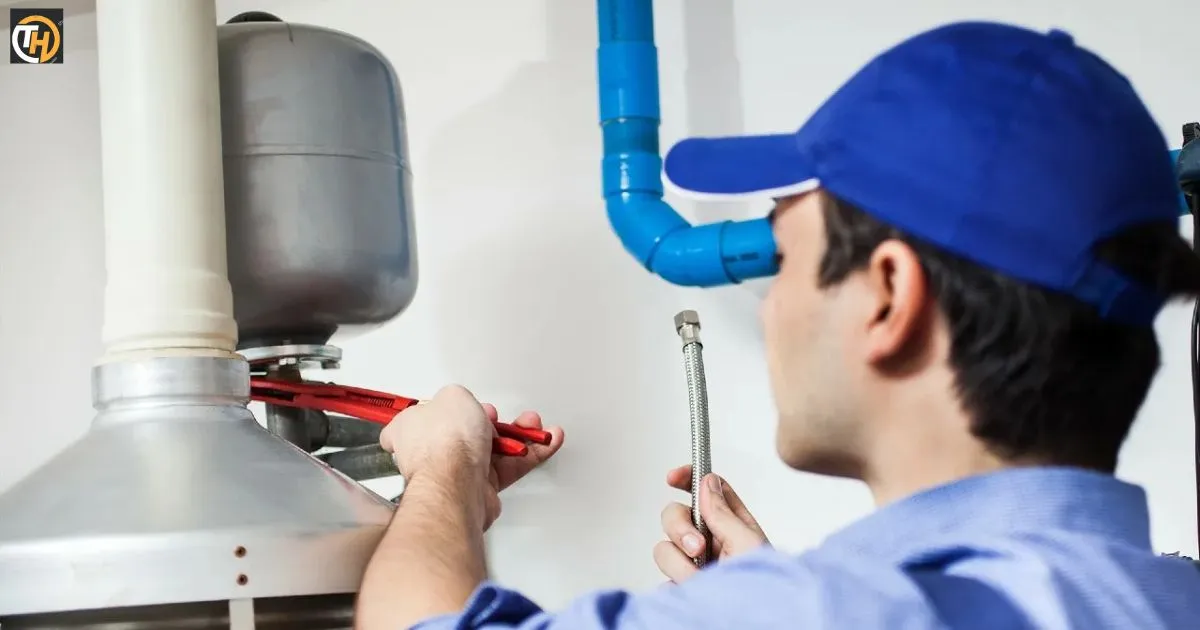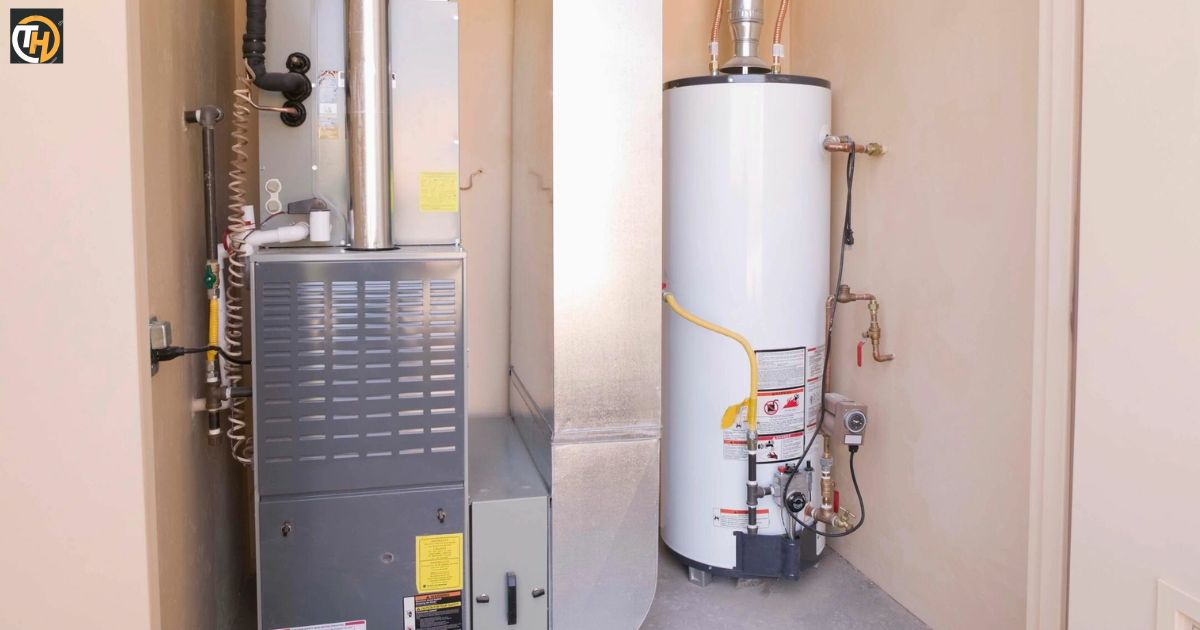A water heater connected to a furnace is a system that combines the functions of heating water for domestic use and providing warmth to the living space through a shared heating source. In this setup, the water heater and furnace are linked in a way that allows them to work in tandem, leveraging a common energy source for heating purposes.
Ever wondered why your water heater is connected to your furnace? In this article, we’ll unravel the mystery behind this common setup, exploring the advantages, and components involved, and how it contributes to energy efficiency and enhanced heating performance.
The symbiotic relationship between a water heater and a furnace becomes apparent when considering the shared heat source. Many homes utilize a furnace that generates heat for both the living space and the water heater.
Understanding the Connection
Direct Connection for Efficiency
Many homes have a direct connection between the water heater and furnace, a strategic move aimed at maximizing energy efficiency and streamlining heating processes.
Components Involved
To comprehend this integration, it’s essential to understand the key components of both the water heater and furnace. Let’s take a closer look at what makes these systems work seamlessly together.
A water heater may be connected to a furnace for a number of reasons
Heating Element
In certain water heating systems, the conventional heating element within the water tank takes a backseat. Instead, these innovative setups harness the heat generated by a furnace or boiler to elevate the temperature of the water.
This approach not only streamlines the water heating process but also taps into the efficiency of a centralized heating system, making for a more energy-conscious and integrated home.
Fuel Source
A noteworthy aspect of the collaboration between a water heater and a furnace lies in their shared fuel source. When both appliances are gas-powered, they often draw from the same fuel reservoir.
This cohesive utilization of resources not only enhances convenience but also ensures a more synchronized and efficient energy conversion process, reducing the need for separate fuel supplies for heating air and water.
Exhaust Flues
The unification of a furnace and water heater extends to their exhaust systems. These interconnected appliances may share exhaust flues, channeling combustion byproducts away from the home.
This integrated approach not only minimizes the need for additional ventilation infrastructure but also aligns with safety standards by consolidating the expulsion of gases produced during the heating process.
Hydronic Furnace
Beyond simply heating water for domestic use, some systems go a step further by incorporating a hydronic furnace. This multifaceted appliance not only warms the water flowing through taps and showers but also serves as an air-heating mechanism.
By integrating hydronic heating, homeowners can enjoy the dual benefit of efficient water heating and a climate-controlled environment, all powered by a single, intelligently designed system.
Understanding these intricacies sheds light on the holistic approach to home heating, emphasizing the advantages of a cohesive system where the water heater and furnace collaborate seamlessly to provide comfort, efficiency, and resource optimization.
Benefits of Connecting Water Heater to Furnace
Energy Savings
By connecting the water heater to the furnace, homeowners can significantly reduce overall energy consumption. This smart integration allows for cost-effectiveness and a more efficient use of resources.
Enhanced Heating Performance
Consistent hot water supply and optimized heating during colder months are among the many benefits of having your water heater connected to the furnace. This integration ensures a harmonious balance in meeting your household’s heating needs.
Installation and Configuration
Professional Installation
To ensure proper integration and compliance with safety standards, it’s crucial to have a professional install the connection between the water heater and furnace.
Configuring Temperature and Flow
Balancing heating needs and preventing issues like overheating or inefficiency requires careful configuration of temperature and flow settings. Professional installation guarantees these settings are optimized for your specific setup.
Common Issues and Troubleshooting
Inadequate Hot Water
If you’re experiencing inadequate hot water, various factors could be at play. We’ll explore potential causes and provide troubleshooting tips to address this common issue.
Uneven Heating
Uneven heating is another concern homeowners may encounter. Identifying the source of the problem and addressing potential issues can help maintain a comfortable living environment.
Maintenance Tips for Efficient Operation
Regular Inspection
Routine inspections, including checking for leaks and corrosion, are essential to ensure the continued efficiency of the integrated system. This involves examining both the water heater and furnace components.
Flushing the System
Preventing sediment buildup is crucial for maintaining optimal performance. Flushing the system at regular intervals is a simple yet effective maintenance task.
When to Consult a Professional?
Warning Signs
Unusual noises or odors and sudden drops in efficiency are warning signs that indicate it’s time to consult a professional. We’ll explore these signs and discuss when to seek expert assistance.
Choosing the Right Technician

When it comes to integrated systems, choosing the right technician is crucial. Look for professionals with experience in handling connected water heaters and furnaces, and check references and reviews for assurance.
Advancements in Integrated Heating Systems
Smart Home Integration
Advancements in integrated heating systems include smart home integration, offering automation for convenience and remote monitoring and control of your heating setup.
Environmental Considerations
Integrated systems contribute to reducing the carbon footprint and promote efficient use of resources. We’ll explore the environmental considerations of having a water heater connected to the furnace.
Here’s a table summarizing the main purpose of the article “Why Is My Water Heater Connected To My Furnace?” with key points and descriptions:
| Purpose | Key Points | Description |
| Understanding the Connection | Heating element | Explains how some water heaters rely on the furnace or boiler for heat, rather than having a heating element in the tank. |
| Fuel source | Highlights the synergy when both the furnace and water heater are gaspowered, sharing a common fuel source. | |
| Exhaust flues | Explores the shared exhaust flues, minimizing infrastructure needs and ensuring safe disposal of combustion byproducts. | |
| Integrated Heating with a Hydronic Furnace | Hydronic furnace | Discusses systems where a water heater not only heats water but also contributes to air heating through a hydronic furnace. |
| Emphasizes the dual benefits of efficient water heating and climate control through a unified and intelligently designed system. |
This table provides a concise summary of the main purpose of the article, outlining key points and offering brief descriptions of each aspect of the interconnected relationship between water heaters and furnaces.
FAQs
Does the furnace heat the hot water tank?
Yes, in some systems, the furnace heats the hot water tank.
Is my water heater my furnace?
Not necessarily; they can be separate appliances, but some systems integrate both functions.
Does the furnace have to do with hot water?
Yes, if it’s part of a combined system, the furnace may contribute to heating hot water.
Why is there a water line to my furnace?
It could be for a hydronic heating system where the furnace heats both air and water.
Can a furnace and water heater share the same vent?
Yes, they can share the same vent, especially in systems where both are gas-powered.
Conclusion
The connection between your water heater and furnace is a strategic move for energy efficiency and enhanced heating performance. From installation and configuration to troubleshooting and maintenance, understanding the intricacies of this integrated system ensures a seamless and efficient operation.
Consider the benefits, consult professionals when needed, and enjoy the comfort and savings provided by this harmonious collaboration.











